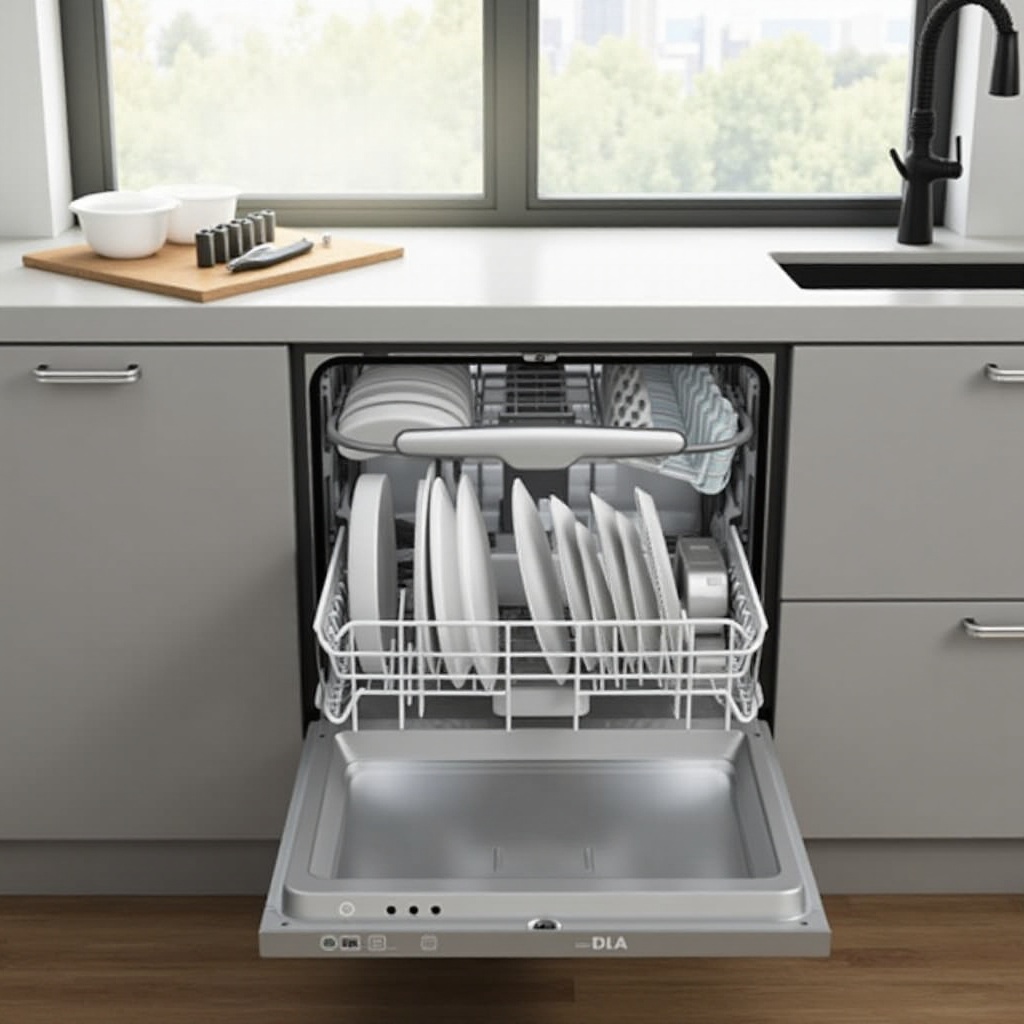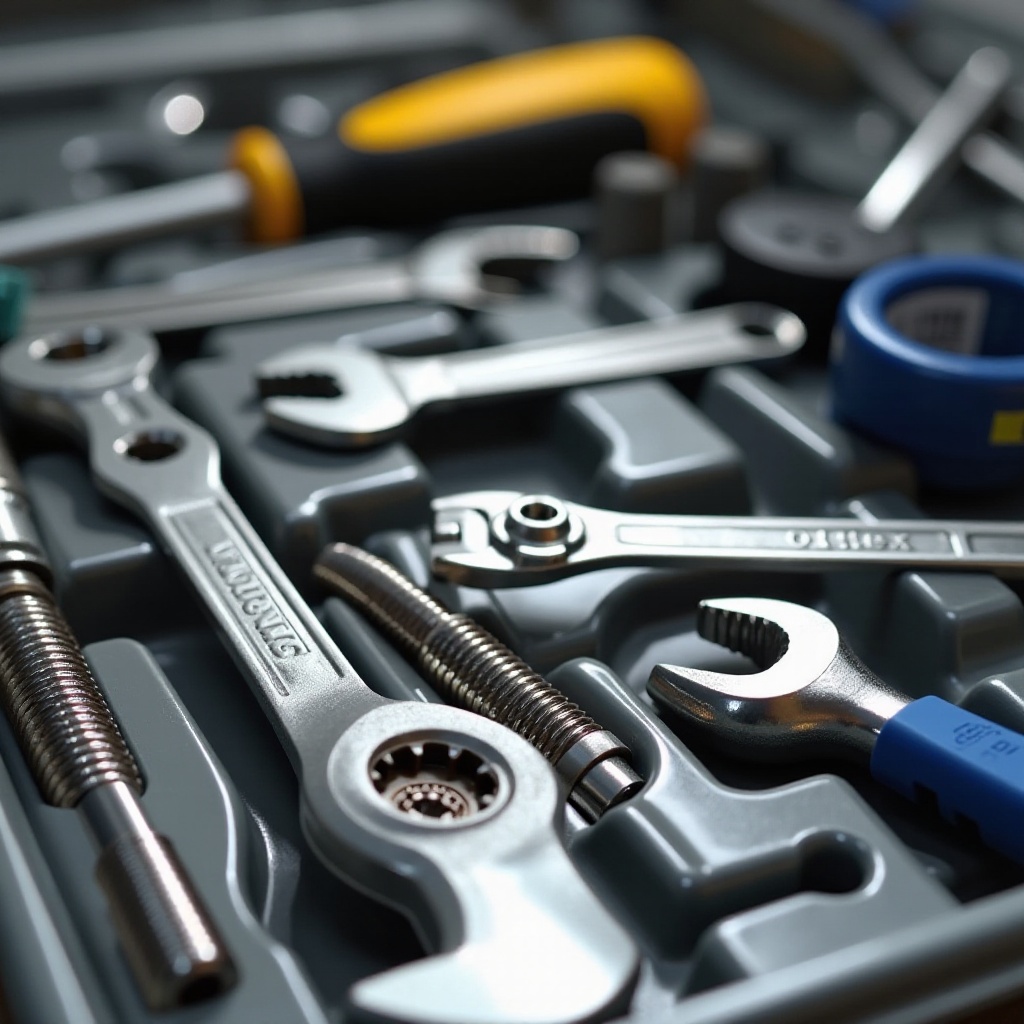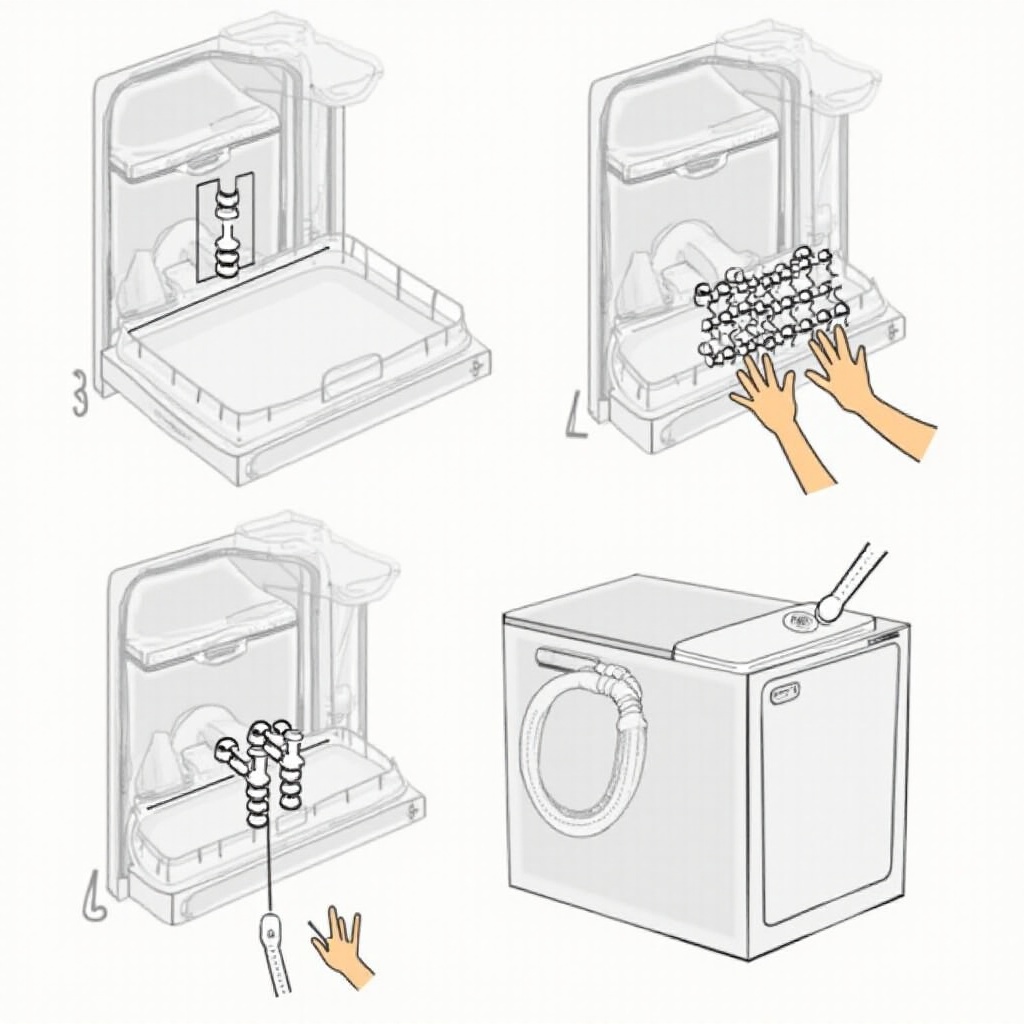Introduction
Properly connecting a dishwasher to a drain is crucial for its efficient operation. A well-connected drain ensures that dirty water is disposed of correctly, preventing leaks and other plumbing issues. This guide will walk you through the process of connecting a dishwasher to a drain, ensuring both a leak-free and efficient system.

Types of Dishwasher Drain Connections
Understanding the different types of drain connections is essential before starting your installation. Knowing what type of connection you need will streamline the process and reduce errors.
Common Types of Drain Hoses
Dishwashers typically use one of two types of drain hoses: standard drain hoses or high-loop drain hoses. Standard drain hoses are more straightforward to install, but high-loop drain hoses reduce the risk of water backflow, making them a preferred choice.
Sink Drain vs. Garbage Disposal Connection
There are two common methods for connecting a dishwasher drain: through the sink drain or a garbage disposal. Each method has its advantages:* Sink Drain Connection: Easier to install and service, suitable for kitchens without garbage disposals.* Garbage Disposal Connection: Provides more efficient drainage and is recommended for kitchens with existing garbage disposals.
Preparation and Necessary Tools
Before starting the installation, gather all necessary tools and materials. Preparing adequately will ensure a smooth installation process.
Essential Tools and Materials
You'll need the following tools and materials:* Screwdrivers* Adjustable wrench* Pliers* Hose clamps* Teflon tape* Dishwasher drain hose kit* Bucket and towels (for any potential spills)
Preliminary Safety Checks and Preparations
Safety is paramount. Before disconnecting or connecting any components, ensure the dishwasher is unplugged and the water supply is turned off. Lay towels or a bucket underneath the work area to catch any water spills.

Step-by-Step Installation Guide
Now, let's dive into the detailed installation process. Follow these steps based on your type of connection—sink drain or garbage disposal.
Connecting to a Sink Drain
- Position the Dishwasher: Slide the dishwasher into place, ensuring it is level.
- Attach the Drain Hose: Connect one end of the drain hose to the dishwasher's drain outlet using a hose clamp.
- Route the Hose: Run the hose through the kitchen cabinets towards the sink drain connection.
- Attach to the Sink Drain: Attach the hose to the sink drain's branch tailpiece and secure it with a hose clamp.
- Secure the Connection: Use pipe thread compounds on threads if necessary to ensure a watertight seal.
Connecting to a Garbage Disposal
- Remove the Knockout Plug: If your garbage disposal is new, remove the knockout plug inside the drain tube.
- Attach the Drain Hose to the Dishwasher: Connect one end of the drain hose to the dishwasher's drain outlet using a hose clamp.
- Route the Hose: Run the hose through the kitchen cabinets to reach the garbage disposal.
- Connect to Garbage Disposal: Attach the hose to the garbage disposal's drain inlet and secure it with a hose clamp.
- Ensure Secure Connection: Tighten all connections to prevent leaks, and apply pipe thread compounds if needed.
Securing and Testing the Connection
Once the drain hose is connected, it's essential to secure and test the entire setup:* Secure the Hose: Ensure the hose is securely attached with no kinks or bends that could obstruct water flow.* Turn on Water Supply and Power: Reconnect the water supply and restore power to the dishwasher.* Run a Test Cycle: Perform a test cycle to check for leaks and proper drainage. Inspect all connections for any signs of water leaks and adjust if necessary.

Troubleshooting Common Problems
Even with careful installation, issues can arise. Knowing how to troubleshoot common problems can save time and frustration.
Identifying Leaks
Leaks can occur for several reasons, such as loose connections or damaged hoses. Inspect all connections with the dishwasher running, and tighten any that may be loose.
Handling Poor Drainage Issues
If the dishwasher isn't draining correctly, check for blockages in the hose or obstruction in the ventilation loop. Ensure the hose is installed correctly and without kinks.
Solving Alignment Problems
Improper alignment can lead to drainage issues. Ensure the dishwasher is level and that the hose connections are straight and secure.
Final Steps and Safety Checks
After troubleshooting, make sure everything is properly set up.
Running a Test Cycle
Run another test cycle to verify that all issues are resolved. Pay close attention to the drainage process during this cycle.
Inspecting for Leaks and Adjustments
After the final test, inspect all connections one more time to ensure there are no leaks. Tighten and adjust as necessary.
Conclusion
Connecting a dishwasher to a drain may seem daunting, but with the right preparation and steps, it can be done efficiently. Ensuring a secure and leak-free connection will lead to years of reliable dishwasher performance. Always remember to test and inspect your work for the best results.
Frequently Asked Questions
What should I do if my dishwasher is not draining properly?
Check for blockages in the hose or dishwasher's filter. Inspect the drain hose for kinks or bends that may restrict water flow. Clear any obstructions and ensure the hose is correctly positioned.
Can I install a dishwasher without a garbage disposal?
Yes, you can connect a dishwasher directly to the sink drain. Ensure the appropriate fittings are used to secure the hose to the drain.
How often should I check my dishwasher drain connections?
Periodically inspect the drain connections every few months to ensure there are no leaks or blockages. Regular checks prevent potential water damage and maintain efficient dishwasher performance.
